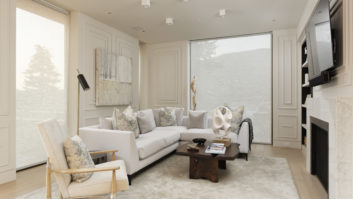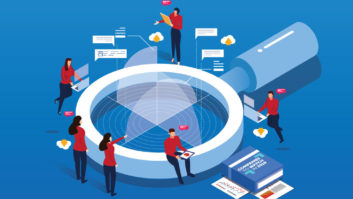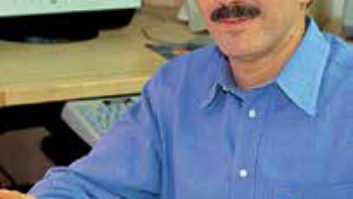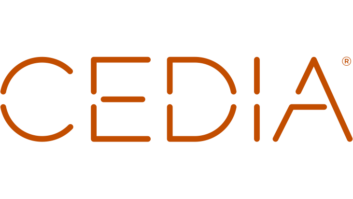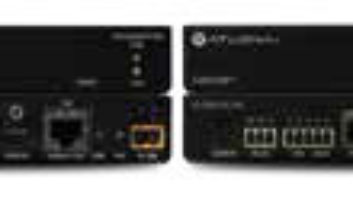Apple announced an event will take place on Monday, March 9th, with a press invite reading “Spring Forward” that many people are speculating refers to the company finally revealing more details about the long-awaited Apple Watch.
The watch, scheduled to launch in April, is still mostly shrouded in secrecy as to what it will or won’t be able to do. Beyond the claimed starting price of $349, and that it will come in three versions–Sport, Standard and Edition–and two sizes–38 and 42mm–there is still much unknown about it. It will support Apple Pay, app push notifications, fitness tracking, and has a questionable battery life; beyond that, the Apple Watch remains much of a tech mystery.
Since Apple products tend to have a profound impact on our industry, I reached out to a variety of integrators and manufacturers and asked what they would like to see in the upcoming Apple Watch and to share some of their hopes, concerns, and expectations.

Integrator Expectations
There are mixed feelings about how much the integration market needs wearable technology like an Apple Watch. For example, Jeff Mitchell, director of projects and systems, Robert Saglio A-V Design, commented, “I am hopeful that a company like Apple that really understands UI, and that how it works is as important as that it works, is finally interested in the connected home. Personally, a really good notification solution from Ihiji, OvrC, Crestron Desktop, or some other might mean that I’ll be wearing a watch again for the first time since I snapped a Motorola pager on my belt.”
At the other end of the spectrum is Darryl Wilkinson, editor at large, Sound & Vision Magazine. Wilkinson routinely reviews both professional and DIY automation systems and has used several wearables. “I’ve been thinking a lot about wearables and smart home integration, and I’m not really sure what value it brings to the table, so I haven’t been paying much attention to the rumors and specs about the Apple Watch,” he said. “I wore a Jawbone Up for a while when I was testing the SmartThings hub. You could press the button on the UP and it would put the house in ‘Good Morning’ mode or whatever you programmed it to do. Yawn.”
Matt D. Scott, president of OMEGA Audio Video, takes a more pragmatic view toward the watch. “If nothing else, Apple has a devoted base that should be more apt to invest in this type of wearable device, creating a much faster and wider adoption rate than any other wearable has experienced in the past,” he said. “That adoption rate will open the doors to actually implementing the integration options that we’d all like to see.”
“The main element any sort of wearable should have for integrators to get excited about is the ability to connect to other devices simply and easily,” said Tim Albright, director of operations for Innovad and founder of AVNation.tv. “Traditionally this has meant Bluetooth or NFC but it isn’t beyond the possibility that Apple has come up with something else even better. With that capability you would be able to seamlessly connect to AV systems for automation. It would also need the ability to share from the watch to a display most likely through Air Play.”
Steven Brawner, president of ProAudio Georgia would like to see simple app activation and integration, being able to use the watch to execute simple commands. “Instead of pulling out my phone to open the shades in the morning and turn on the TV,” Brawner said, “I could write a very simple interface that has the same capability as my full interface. So instead of a screen full of buttons, maybe 3 buttons that would be Good Morning, Good Night, and ‘What the hell was that noise?!’ to trigger the same commands as the mobile device interface. Airplay control to change the music you are streaming, skip tracks, raise and lower volume would also be great, especially if it worked without having to be within reach of your phone.”
To iPhone or not to iPhone?

There is also the question of how standalone the watch will be and how much functionality it will have without being tethered to an iPhone.
“My hope is for the watch to work without another device,” Albright added. “The other watches that are out there need to be paired to a mobile device of some form. If the Apple Watch could do all without needing another device that would be great.”
Ric Johnson, president and CEO at Right at Home Technologies, is “working on the premise that the Apple Watch will be an extension of the iPhone 6,” he said. “With that premise, we are looking at running IFTTT programs with notification for our Aging in Place features, such as reminders for meds and exercise. Until we can see and actually work with this new tool, I am not sure how we can fully incorporate it into our systems, but the possibilities for caregivers and patients are exciting.”
Will Price, CEO and founder of Roomie Remote said, “Watch apps do not allow for the concept of talking to anything other than your iPhone–even an iPad or iPod is out. All the heavy lifting is done by your phone. Anything that runs on the watch is first running on your iPhone–in the background so this all appears to be seamless to a user. The watch is therefore a subset of that existing app.”
Manufacturers Watch Apple Watch
Just as an iPhone and iPad are nothing without the apps that drive them, the Apple Watch will need third party support from other manufacturers, especially if it will be integrated into our projects and systems.
The one company you might think would be the most dialed-in to and poised to capitalize on an Apple Watch is Savant, whose system is Apple-centric to the core (pun intended). Unfortunately, the Savant spokesperson was unable to comment at the time. Maybe after the event on the 9th…
Crestron, which was quick to embrace Apple iPhone and iPad integration is definitely looking at the watch at an extension to its control systems. “We are excited about the new Apple Watch,” said Delia Hansen, Crestron’s senior residential marketing manager. “We’ve been anticipating its release and our upcoming app’s compatibility with it. We think wearables can be a very convenient way to stay in touch with social media platforms, and now lights, shades, and other home controls. You won’t even have to reach for your phone or a remote, just twist your wrist and tap the app.”
“The wearables category is obviously super hot right now,” Control4’s public relations manager, Blair Sonnen said. “A quick browse among CES this year shows it is here to stay for a long time. To date, we have not been overly inspired by the things we are seeing in terms of applicability to home automation. But that doesn’t mean it won’t come eventually.
“Think about a watch that could choose a playlist based on your heart rate,” Sonnen continued, “or have a screen where you could see who is at your front door when the doorbell is rung, or just serve as the voice-activation side of your system remote. We think that in terms of integration and if these devices eventually have the voice recognition and the wireless communication speed to be as responsive as, say, your handheld Control4 system remote, then they could become truly useful for home automation. It needs to be fast, responsive and very comprehensive. Having all the functionality that smartphones currently have, only now on your wrist, creates additional potential for simple control. A Control4 app on a smart watch would be wicked!”
Roomie Remote’s Price, who plans to implement the watch into the company’s line of home control solutions shared, “One of the quotes from an Apple guy I know is ‘try not to do anything on the watch that takes more than 5 seconds.’ It’s for glancing, notifications, and quick changes. So why not fix the volume, hit pause or mute, turn your system off, and other basic activities with it? Those are core-use cases for the watch with AV.”
ELAN is taking a “wait and see” approach.
“We don’t have any special plans for the Apple Watch right now,” said Robert Ridenour, brand manager at ELAN. “ELAN is waiting a little to see how these devices are used inside the home. Are they left on? Or are they removed for charging like the cell phone? These are our first big questions. If they are left on then we would love to create a way to utilize them as a location device to automatically change user preferences on an interface. If they are taken off, well there isn’t much to do with them. We have some other plans for g! to integrate the mobile environment that could easily extend to the wearable world. As the wearable world becomes more consistent in its execution, it will be easier to define features that enhance value.”

One company that has been on the books with Apple Watch integration for several months is Lutron. As director of product management, Matt Swatsky said, “Lutron is thrilled that its Caséta Wireless is connecting people with their homes through Apple Watch, putting control of lights, shades and more right on your wrist. You now have control anytime, from anywhere. Turn lights on as you arrive home so you never have to enter a dark house again, or transform a room into an ideal place for watching a favorite movie. And, if you leave the lights on at home, you’ll receive a notification on your wrist with the ability to turn them off with a simple tap.”
Lutron lighting control is something that has installers excited as well. OMEGA’s Scott commented, “I’m looking forward to them building off some of the features they showed at [the Apple Watch] introduction with products like Lutron’s Caséta, giving you the ability to control things like lighting right from your wrist.”
“I’m pretty excited about the prospect of having a Lutron lighting system at command under the lightbulb logo Apple has been flashing about,” Mitchell added. However, he continued that he’s “more than a little nervous that it might only be Caséta, and not the more capable systems we typically need for our projects.” (I was unable to get a comment from Luton on whether Radio RA2 or HomeWorks will be supported by the Apple Watch.)
The Killer App?
One of the potential Apple Watch features that has most integrators excited is a hoped-for geofencing support. Geofencing is a feature that uses GPS or other radio signals to define geographical boundaries to create a virtual barrier. Once this barrier is broken, programming can trigger events or activities.
“If we can ever get geofencing working in a substantial way with real home automation systems, I might change my thoughts on [wearables] because I don’t necessarily carry my phone with me everywhere when I’m walking around the house,” said Residential Systems’ reviewer, Dennis Burger.
“I’m envisioning a future where a lighting system may respond automatically to the unique preferences of the user as he or she moves in and around the home (or even to and from it),” Burger continued. “Say, if I enter the kitchen, it lights to my preferred cavern-like lighting levels, and when my wife enters the kitchen, the power of a thousand suns shines from the ceiling.”
Robert Saglio’s Mitchell also thinks that geofencing could be the killer app. “I think it’s likely that a whole collection of applications with location awareness and geofencing could actually become relevant and not just a parlor trick of home automation,” he said. “I think it’s the last step in making it really obvious that having a climate control system that you can turn on/off when you’re away from home is a no brainer decision. Given the choice, who wouldn’t want that option?”
ProAudio Georgia’s Brawner imagines this Apple Watch geofencing scenario: “You pull out of the driveway and the system recognizes all devices that control the home are off site,” he said. “The garage door closes, all lights turn off, all AV systems power down, the alarm system arms, and the thermostats move 2-3 degrees. This would of course have an indication on the watch with a 30 second countdown to deactivate the feature in the case you have a mother-in-law staying at the home and you don’t want to give her a heart attack.”
George Tucker, cofounder and producer at AVNation.tv, speculates on other features the Apple Watch might bring to automation. “While [the watch] has Wi-Fi and GPS, I would love to see it include Bluetooth and NFC (Near Field Communications). I could foresee door access without the need for a mounted keypad. While Wi-Fi can be the framework for a lot of this, Bluetooth is just so much easier to connect and manage. NFC is fairly obvious–similar to the use in wallet and pay schemes–but I see it as a very good connection method for room-to-room sensing.
“Using NFC,” Tucker continues, “the control system can tell the speed, direction and predictive destination. An example of this would be an individual traveling down stairs or a hallway (residential or commercial), the system would be able to sense how fast this person is walking and determine how much lighting to activate – ‘running lights’ for someone just passing through and full lights for when you have stopped at the fridge, etc.”
The potential health features of the watch are also intriguing in how they could be used in conjunction with location. “Hopefully some of the HomeKit features we would like to employ–proximity control such as raising or lower lighting and temp as the caregiver and/or patient enters and leaves a space–will combine with the HealthKit app,” Johnson of Right at Home Technologies commented. “This could be used to address real-world health concerns such as heart rate, blood and sugar notifications, as well as for counting steps or movement.”
“The big benefit to Control4,” Sonnen added, “would be the ability to take advantage of control-localization. Let’s say a smart watch has NFC and the accuracy to understand definitively what room you are currently occupying. I would love for Control4 to use our engineering resources to create integrated NFC sensors for our systems to understand which room you are in. So when you say ‘turn on ESPN,’ it will know that you want the bedroom TV and not your living room.”
Roomie Remote is already planning on utilizing the watch for localizing to speed up user interaction. “Within the five second rule, the user should ideally not have to first specify what room they would like to control, as that’s half your interaction time lost,” Price said. “The best solutions will already know what room you’re in the moment you glance at the watch, and present the most relevant controls for that room to you automatically. That’s Roomie Remote’s plan and we should be ready on release of the watch.”
Sound & Vision’s Wilkinson is not totally convinced. “I’m not sold on the idea of beacons throughout the house automatically triggering events. There are too many variables to consider other than just, ‘John walked into the bedroom.’”
Siri on Your Wrist

Having Apple’s virtual assistant, Siri, living on your wrist could be another benefit the watch could bring to home automation. Instead of needed to pull out a phone, press and hold a button and then engage Siri, the watch could make this faster and easier.
“While Siri control of automation systems has been possible for at least 3 years, it will be nice to see more native Siri support on the automation manufacturer’s side of things,” said Phillip “HiPhi” Cordell, director of engineering at M3 Technology Group. “Siri control of an iPhone or iPad isn’t as glamorous as my Apple Watch would be, as I’d still have to locate and touch the control surface to send my commands. Watching my Multiple One Shots fire through [Crestron] SIMPL debugger by simply talking into my watch sounds like a future dream come true!”
Wilkinson imagines possible Siri integration going even further. “The game changer would be if it had Siri integration to control your home automation system,” he said. “For a lot of things it’s easier to push a button, but some things do lend themselves to voice control. Being able to say, ‘Siri, unlock the front door’ when you have groceries in your hands would be very useful. Or, ‘Siri, turn on the outside lights.’ As long as the Apple watch will let you talk to Siri without having to touch a button, then it’s great. Otherwise, the watch is just another remote control screen but smaller and probably harder to use.
“From my experience with smart watches in general,” Wilkinson continued, “unless they have voice recognition they’re really only useful for a couple of things: reading texts without pulling phone out of pocket, reading notifications from my iPhone as they pop up, seeing caller ID when the phone rings, skipping songs on Pandora when driving in the car (which actually doesn’t always work on my Pebble), and having the time/date/temp/weather conditions displayed on the watch.”
Battery
As with any modern-day technological device, the Apple Watch will have a battery that will require charging. Just how long it will last and how often it will need to be charged, however, remains to be seen and appears to depend heavily on the watch’s usage.
9To5Mac’s article, “Apple targets for Apple Watch battery revealed,” provides the best glimpse into the watch’s potential power longevity.
“Our sources say that Apple is targeting 2.5 hours of ‘heavy’ application use, such as processor-intensive gameplay, or 3.5 hours of standard app use,” the article states. “Apple expects to see better battery life when using the watch’s fitness tracking software, which is targeted for nearly 4 hours of straight exercise tracking on a single charge. We’re told that the watch should be able to display its clock face for approximately three hours…if nothing else is done with the device.”
As bad as this might sound, 9ToMac points out, “The reality is that people will passively wear the Apple Watch for most of the day, actively interacting with it only for short periods of time. That’s why the Watch will be able to last the average user roughly a day on a single charge. We’re told that Apple has been shooting for roughly 19 hours of mixed usage each day, but that the company may not hit that number in the first-generation version.”
“Until they can get the thing to last more than the better part of a single day on one charge,” Burger commented, “I’m not sure even [what] could convince me to buy one.”
“Once I heard the battery life was going to be worse than the i’m Watch,” Wilkinson added, “I kind of lost interest” (For more perspective on the i’m Watch, read my abysmal (and hilarious) review here).
Must-Have Game Changer?
Despite Apple’s track record at being able to create and reinvent categories, not everyone is convinced that an Apple Watch is going to be a must-have for integration.
“The Apple Watch just doesn’t feel like the right product for me,” Burger said. “Don’t get me wrong: I absolutely marvel at the fact that we can put such technology in such a tiny package that can be strapped right to your wrist, but to me it all just seems overly complicated. I can’t imagine any home control features I would want to access from my wrist that I can’t from my phone or a handy touchscreen remote right by my side. I just worry that the interface will be too cluttered to really make it worthwhile.”
Brawner has more practical feelings about the watch. “I do not think it will be a game changer as wearable tech has been around for a bit,” he said, “but it will sell because it has an Apple logo on it. As sad as that is, it works and for that I commend them. My expectations are that it will sell and have many flaws that fans say do not exist, and our industry will suffer from the fact that our clients are convinced that it is the greatest creation since sliced bread, and we have to use it.”
Wilkinson, who has lived with a Pebble smart watch for some time added, “I’ve used a couple of the Pebble apps to control my Philips Hue lights. Meh. Ditto for the Nest and Sonos apps. Relatively useless. Perhaps things will be different once Apple really gets going on HomeKit integration.”
Control4’s Sonnen also doubts the watch will achieve “must-have” status. “Right now most of the abilities that are present in a smart watch have already been present in smart phones for many years (GPS, voice recognition, Wi-Fi control, push notifications etc.). But this category has a unique opportunity to create even simpler interaction with what you are controlling. If, say, you can integrate your heart rate into a control program where anytime it sees you arrive home with a heart rate above 120 bpm, it turns on the bedroom/bathroom lights for you to take a shower, that will be an example of commodity integration; not must-have.”
Despite all of this, Brawner sums up what the watch will like mean to the integration market by saying, “We will adapt and find a way to profit from it.”
John Sciacca is principal of Custom Theater and Audio in Myrtle Beach, SC.




